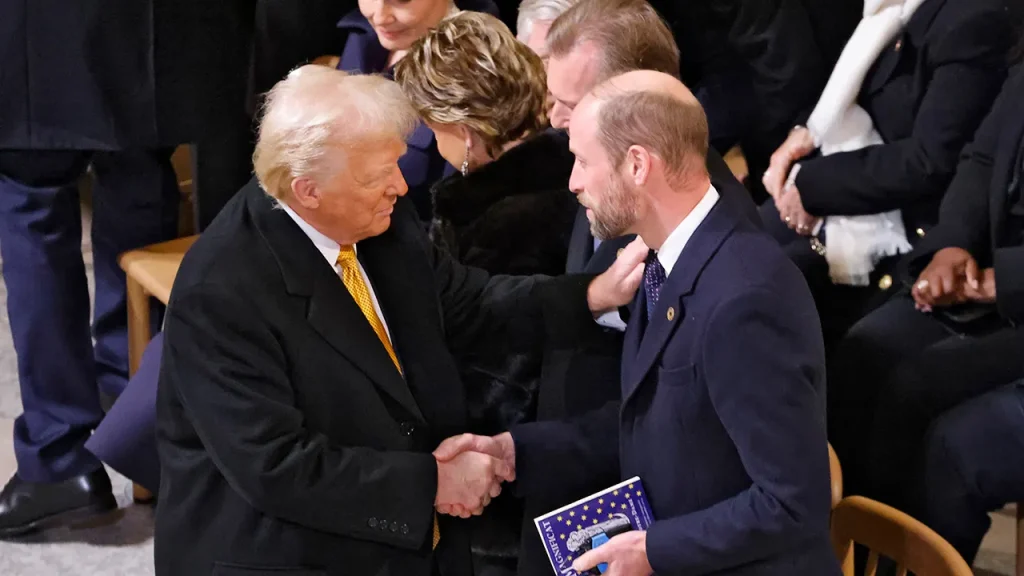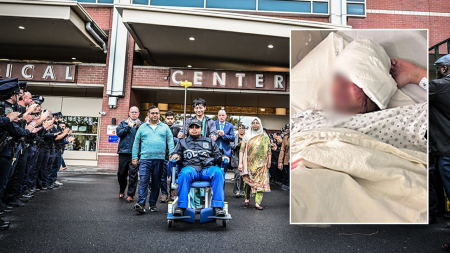Donald Trump’s attendance at the reopening of Notre Dame Cathedral in Paris became a significant international event, capturing global attention and sparking widespread discussion on social media. The former president’s interactions with various world leaders, including French President Emmanuel Macron, Ukrainian President Volodymyr Zelenskyy, and Britain’s Prince William, highlighted his continued influence on the world stage, even before officially resuming his presidential duties. The warm greetings he received, the pomp and circumstance surrounding his presence, and the viral spread of images and videos of his interactions fueled speculation about the resurgence of his global leadership role.
The event was marked by several notable moments, including a handshake with Macron that quickly became a topic of online conversation. Commentators and social media users analyzed the interaction, with some describing it as a display of dominance by Trump. Other encounters, such as his meeting with Prince William and his conversation with Zelenskyy, further reinforced the perception of Trump as a prominent figure in international affairs. The red-carpet treatment and the deference shown by world leaders stood in stark contrast to the absence of President Biden, who cited a scheduling conflict. This absence only served to magnify Trump’s presence and fueled discussions about the shifting dynamics of global leadership.
The reactions on social media were varied, reflecting both support and criticism of Trump’s prominent role at the event. Some users celebrated his return to the global stage, emphasizing the respect shown to him by world leaders and interpreting it as a sign of renewed American leadership. Others questioned the appropriateness of the attention bestowed upon a former president, particularly in the context of a significant cultural and historical event like the reopening of Notre Dame. The online commentary underscored the polarizing nature of Trump’s persona and the ongoing debate about his influence on international relations.
Trump’s trip to Paris, just a week after an unannounced visit from Canadian Prime Minister Justin Trudeau, further cemented his position as a central figure in global politics. These interactions, occurring before his official return to the Oval Office, highlighted his ability to command attention and influence events on an international scale. The Notre Dame visit served as a symbolic moment, signaling Trump’s re-emergence onto the world stage and prompting discussions about the future of American foreign policy under his leadership.
Experts and commentators weighed in on the significance of Trump’s presence at the event. Some argued that it represented a shift in the global balance of power, with world leaders eager to engage with the incoming president. Others cautioned against reading too much into the event, emphasizing the symbolic nature of the occasion and the importance of waiting to see how Trump’s actions align with his rhetoric once he is back in office. The varying perspectives highlighted the complex and evolving nature of international relations and the challenges of predicting the future trajectory of global leadership.
The reopening of Notre Dame Cathedral, a landmark steeped in history and cultural significance, provided a unique backdrop for Trump’s return to the world stage. The event, intended to celebrate the restoration of a cherished monument, became intertwined with the narrative of Trump’s resurgence as a global leader. The confluence of these two narratives, one focused on cultural heritage and the other on political power, created a complex and multifaceted event that captured the attention of the world and sparked widespread discussion about the future of international relations.










